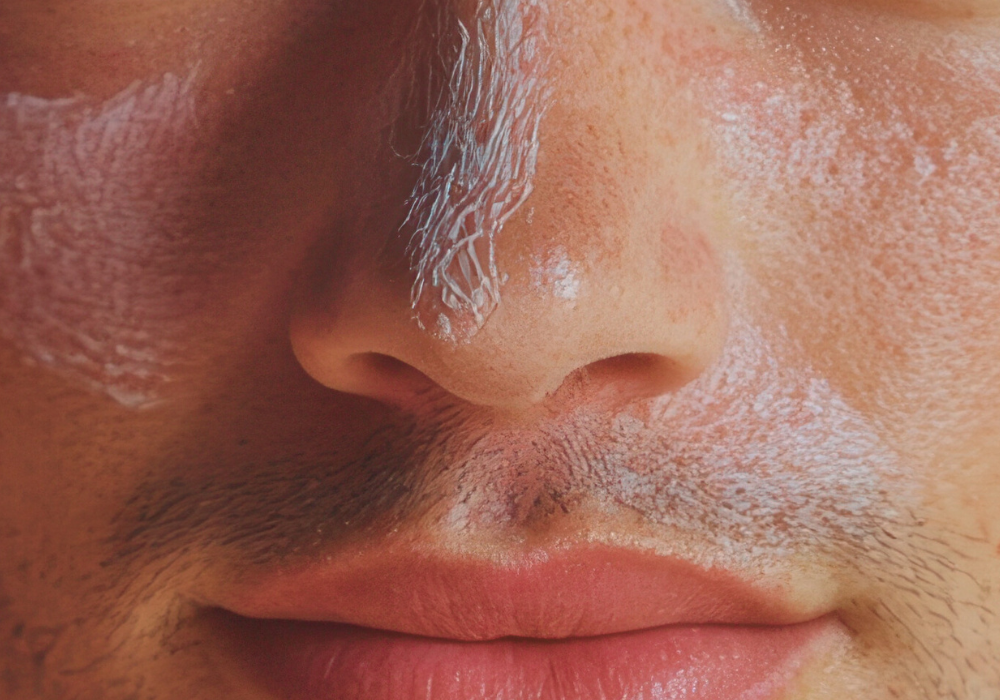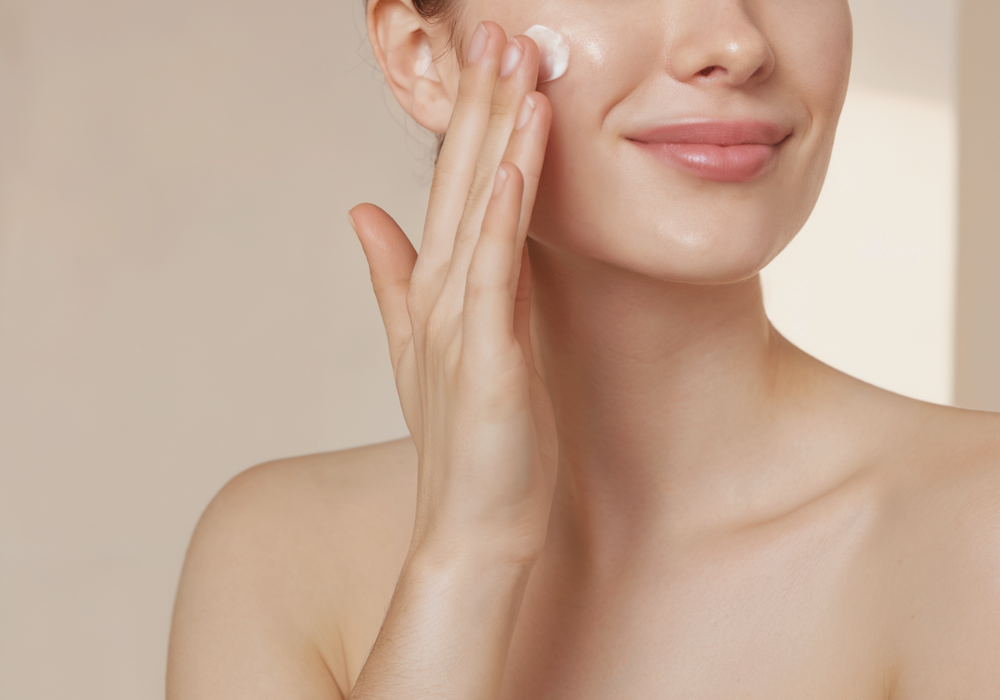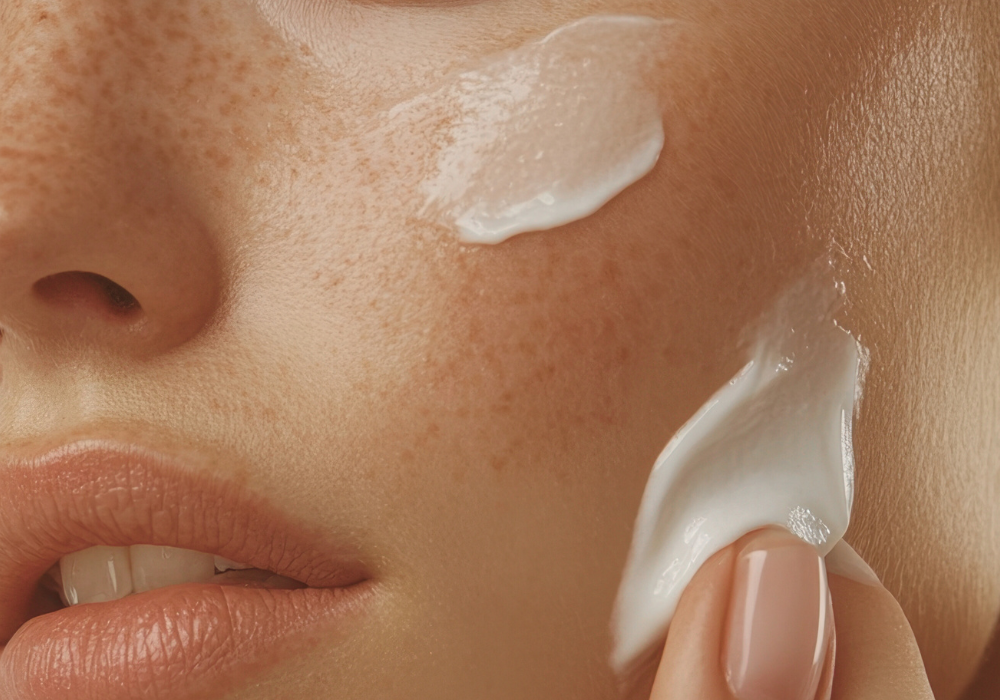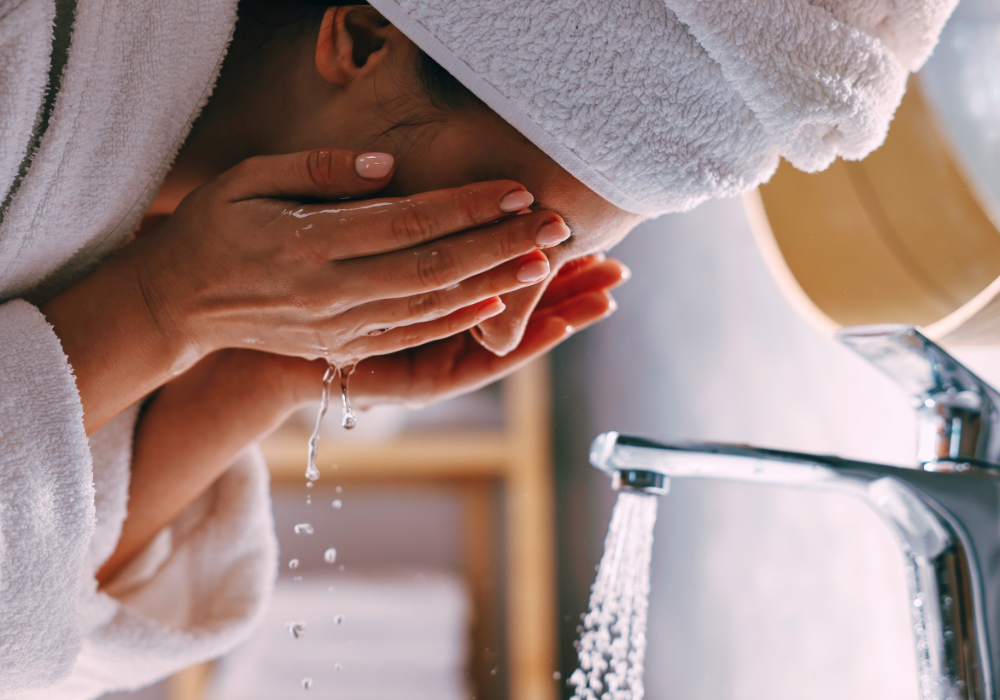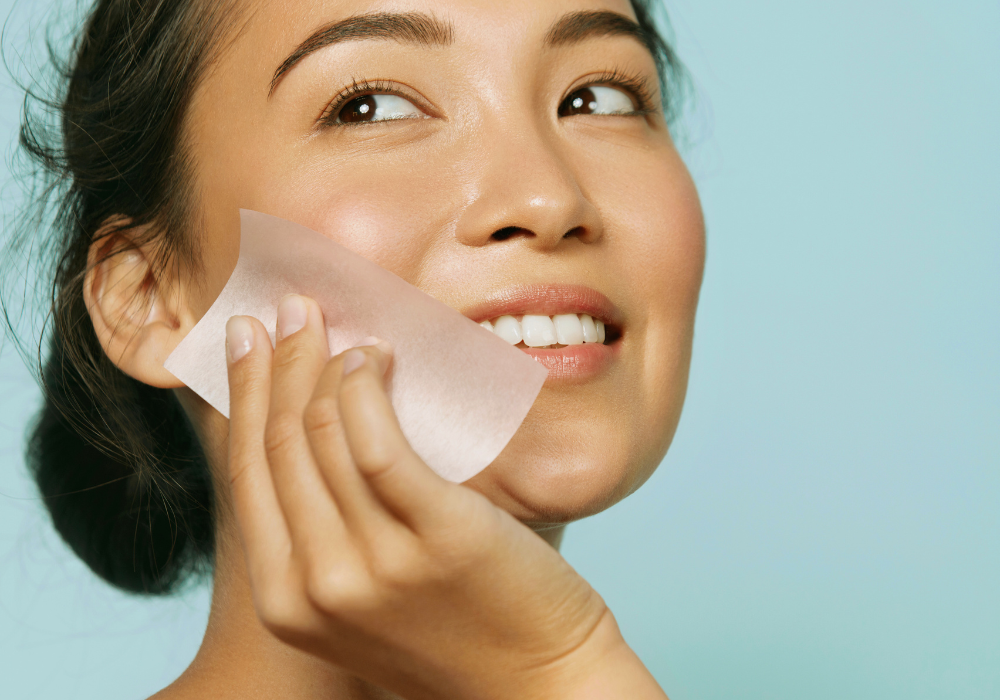David Beckham's approach to skincare has helped normalize men's grooming in a way few celebrities have managed. His straightforward routine—built around cleansing, hydrating, and sun protection—shows that effective skincare doesn't require complexity, just the right products used consistently. While Beckham launched House 99 to make premium grooming more accessible, the principles behind his routine apply to anyone seeking clear, healthy skin. The key is multifunctional formulas that simplify your regimen without sacrificing results, like a science-backed exfoliating cleanser that handles multiple steps in one application.
Men's use of skincare products has increased significantly in recent years. That's not just marketing—it reflects a growing understanding that skin health matters for everyone. Beckham's influence extends beyond his product line; he's helped reshape how men think about taking care of their skin.
The science supports this shift. Men's skin has unique characteristics requiring specific approaches, and the results of consistent care show up in both appearance and confidence. If you're looking to build a routine inspired by professional grooming standards but simplified for daily life, understanding the fundamentals makes all the difference.
Key Takeaways
-
Men's skin is biologically different—25% thicker and produces 20-30% more sebum—requiring tailored products rather than borrowed formulas
-
A three-step routine of cleanse-moisturize-protect addresses the primary cause of visible aging (UV exposure accounts for up to 95%) and significantly reduces skin cancer risk through daily SPF use
-
Consistency delivers better outcomes than expensive products used sporadically—expect visible improvements within the 28-day skin cycle
-
Multifunctional products that combine exfoliation, cleansing, and hydration save time while delivering professional-grade results
-
Celebrity routines inspire action, but individual skin type and realistic expectations determine long-term success
What Makes David Beckham's Skincare Routine Stand Out
Beckham's approach reflects professional grooming standards adapted for everyday use. His routine prioritizes consistency over complexity, focusing on three core steps that address the specific needs of men's skin.
The global men's grooming market reached $78.6 billion in 2023 and is projected to hit $110.5 billion by 2030. Celebrity-founded brands like House 99 have played a significant role in this growth, making skincare feel less intimidating and more accessible.
The Evolution of Men's Skincare in Professional Sports
Athletes have long understood the connection between skin health and performance. Sun exposure, sweat, and environmental stress all take a toll on skin, making protective and restorative skincare essential.
What sets Beckham apart is his willingness to discuss skincare openly. This visibility helps normalize routines that were once considered unnecessary or even questioned. When high-profile figures talk about their grooming habits, it removes stigma and encourages broader adoption.
Why Elite Athletes Prioritize Skin Health
Physical performance and recovery extend to skin care. Men shave approximately 20,000 times in their lifetime, creating ongoing stress on facial skin. Add training environments—chlorine, sun, artificial turf—and the need for protective skincare becomes clear.
Professional athletes also face intense scrutiny on camera and in person. Clear, healthy skin contributes to a polished appearance, which matters in endorsements and public-facing roles. The routine Beckham follows addresses both practical skin health and the demands of a high-visibility career.
The Foundation: Daily Cleansing for Men's Skin
Proper cleansing reduces acne lesions by up to 30% in men with oily or combination skin. The goal is removing impurities, excess oil, and environmental buildup without stripping the skin's protective barrier.
Men's skin produces more sebum than women's, making twice-daily cleansing essential for most skin types. Morning cleansing prepares skin for the day ahead, while evening cleansing removes accumulated sweat, pollution, and residue.
How Often Should Men Cleanse Their Face
Twice daily—morning and night—works for most men. If you exercise or work outdoors, an additional post-workout cleanse prevents sweat-induced breakouts.
The Kipi Exfoliating Daily Cleanser combines cleansing with gentle exfoliation and hydration in a single step. Its triple-action hydroxy acid blend (2.4% total) removes impurities while charged hyaluronic acid (0.1%) ensures skin stays hydrated rather than tight or dry.
Benefits of daily cleansing:
-
Clears pores of excess oil and debris
-
Removes sweat and environmental pollutants
-
Prepares skin for moisturizer or SPF application
-
Reduces breakouts and improves texture
The Right Cleansing Technique for Maximum Results
Use lukewarm water—hot water can strip natural oils. Dispense a nickel-sized amount into your palm, add water, and work into a lather.
Massage onto face and neck using circular motions for 20-30 seconds. This duration allows active ingredients to work without over-manipulating skin. Rinse thoroughly and pat dry with a clean towel.
pH-balanced formulas (4.5-5.5) maintain the skin's natural acidity, supporting the microbiome and barrier function. The Kipi cleanser is formulated at this range, ensuring effective cleansing without disruption.
Exfoliation: The Secret to Smooth, Refined Skin
Exfoliation removes dead skin cells that accumulate on the surface, revealing fresher skin underneath. Chemical exfoliants—alpha hydroxy acids (AHAs), beta hydroxy acids (BHAs), and polyhydroxy acids (PHAs)—work more effectively than physical scrubs.
The 28-day skin cell turnover process means consistent exfoliation yields visible improvements within 4-6 weeks. Skin appears brighter, texture smooths, and products absorb more effectively.
Why Chemical Exfoliants Outperform Scrubs
Physical scrubs use abrasive particles that can create micro-tears in skin, especially when applied with pressure. Chemical exfoliants dissolve the bonds between dead cells, allowing them to slough off naturally.
AHAs (like citrus-derived acids) brighten and smooth surface texture. BHAs (salicylic acid) penetrate pores to clear oil and debris. PHAs (like gluconolactone) exfoliate while providing hydration.
The Kipi Exfoliating Daily Cleanser contains all three hydroxy acid types:
-
Alpha-Hydroxy Acid Complex, 1%: Citrus fruit extract blend that brightens and gently exfoliates
-
Beta-Hydroxy Acid Complex, 0.4%: Salicylic acid that refines texture and clears pores
-
Gluconolactone USP, 1%: Polyhydroxy acid that exfoliates while hydrating
How Hydroxy Acids Renew Skin Without Irritation
Low concentrations used consistently outperform occasional high-strength treatments. The triple-acid approach in professional-grade cleansers provides effective exfoliation without the irritation associated with single-acid formulas at higher percentages.
These acids break down the dull surface layer, encouraging cellular turnover. The result is smoother texture, refined pores, and a more vibrant complexion—all without harsh physical abrasion.
Hydration: Keeping Skin Plump and Balanced
Moisturizers improve skin hydration with regular use. Even oily skin needs hydration—skipping moisturizer can trigger increased oil production as skin compensates for dehydration.
Hyaluronic acid is a standout hydrating ingredient, capable of holding up to 1,000 times its weight in water. This molecule attracts moisture to the skin's surface and helps maintain plumpness.
The Science of Hyaluronic Acid in Men's Skincare
Traditional hyaluronic acid works by drawing water to the skin. Advanced formulations use charged hyaluronic acid (sodium hyaluronate) that binds more effectively to skin cells.
The Kipi cleanser includes charged hyaluronic acid that delivers lasting hydration even after rinsing. This ensures skin doesn't feel stripped or tight post-cleanse—a common complaint with traditional face washes.
Hydration benefits:
-
Plumper, smoother skin texture
-
Reduced appearance of fine lines
-
Better moisture retention throughout the day
-
Improved barrier function
Signs Your Skin Needs More Hydration
Tightness after cleansing, flaking, or rough texture all indicate dehydration. Oily skin can also be dehydrated—excess oil production sometimes compensates for lack of water in skin cells.
Provitamin B5 (panthenol) supports the skin barrier while providing soothing benefits. At 1% concentration in the Kipi formula, it works alongside hyaluronic acid to maintain balanced hydration.
Skincare Routine Steps for Men: Morning vs. Evening
A structured sequence ensures products work effectively without interference. Morning routines prepare and protect; evening routines repair and restore.
Building Your Morning Skincare Routine
Step 1: Cleanse Remove overnight oil buildup and prepare skin for subsequent products. Use a cleanser that exfoliates and hydrates to consolidate steps.
Step 2: Moisturize Hydrate skin with a lightweight formula appropriate for your skin type.
Step 3: Protect Apply SPF 30-50 sunscreen. This step is non-negotiable—daily sunscreen use has been shown to reduce photoaging and significantly lower melanoma risk in clinical trials.
Essential Evening Skincare Steps
Step 1: Cleanse Remove sweat, oil, and environmental buildup from the day. If wearing sunscreen, ensure thorough removal.
Step 2: Treat (Optional) This is when you'd apply treatment products like retinol or targeted serums.
Step 3: Moisturize Richer formulas can be used at night since there's no concern about shine or SPF layering.
How Long Each Step Should Take
Effective skincare doesn't require extensive time. Cleansing takes 20-30 seconds of actual massage time, plus rinsing. Moisturizer and SPF application take under a minute each. Total routine time: 3-5 minutes morning and evening.
Skincare for Oily Skin: Managing Excess Oil and Shine
Men's skin produces 20-30% more sebum than women's, leading to shine, enlarged pores, and increased breakout risk. Managing oil without over-drying requires specific ingredients and techniques.
How Beta Hydroxy Acids Control Oil Production
BHAs like salicylic acid are oil-soluble, allowing them to penetrate pores and dissolve sebum buildup. This clears debris that can lead to breakouts while refining pore appearance.
The 0.4% salicylic acid in the Kipi Exfoliating Daily Cleanser targets excess oil without the harsh stripping that triggers rebound oil production. It balances oily skin rather than over-drying it.
Oil management strategies:
-
Use oil-soluble BHAs to penetrate pores
-
Maintain hydration to prevent compensatory oil production
-
Choose non-comedogenic products that won't clog pores
-
Cleanse after sweating to prevent buildup
Common Mistakes Men Make with Oily Skin
Over-cleansing strips skin, triggering increased oil production. Using harsh, alcohol-based products creates the same problem. Skipping moisturizer because skin feels oily leads to dehydration, which paradoxically increases sebum output.
The solution is gentle, consistent cleansing with ingredients that regulate—not eliminate—oil production, paired with lightweight hydration.
Best Skincare Products for Men: What to Look For
Quality matters more than price when it comes to skincare efficacy. Understanding ingredient concentrations, formulation science, and certifications helps you choose products that deliver results.
Ingredient Transparency and What It Means
Reputable brands disclose active ingredient percentages, allowing you to compare formulations. Generic "contains hyaluronic acid" claims are less useful than specific concentrations like "0.1% charged hyaluronic acid."
The Kipi Exfoliating Daily Cleanser lists exact percentages for all active ingredients:
-
Triple-action hydroxy acids: 2.4% total (1% AHA, 0.4% BHA, 1% PHA)
-
Charged hyaluronic acid: 0.1%
-
DL-Panthenol (Provitamin B5): 1%
This transparency allows informed decisions based on proven ingredient levels rather than marketing claims.
Why Multifunctional Products Save Time
Products that combine benefits reduce routine complexity. A cleanser that also exfoliates and hydrates replaces three separate products, cutting application time and simplifying your regimen.
Building a one-step routine with multifunctional formulas addresses the top barrier to skincare consistency: time. When products work efficiently, adherence improves.
Certifications That Matter in Men's Skincare
Vegan and cruelty-free certifications indicate ethical manufacturing without animal testing. Sulfate and paraben-free formulations avoid potentially irritating ingredients. pH-balanced products (4.5-5.5) support skin's natural acidity.
These markers indicate thoughtful formulation that prioritizes both efficacy and skin health.
Frequently Asked Questions
Does David Beckham actually use the House 99 products he created?
Beckham has discussed his involvement in developing House 99, creating accessible grooming products that reflect his skincare philosophy: consistent basics done well matter more than complex routines.
Can men use women's skincare products, or do they need specific formulations?
Men's skin is thicker and produces more oil. Products formulated for these characteristics—like those with BHAs for oil control—often work better. Match formulation to your skin type rather than gendered packaging.
How long does it realistically take to see improvement in skin appearance?
Most improvements require 4-6 weeks of consistent use due to the 28-day skin cell turnover cycle. Hydration benefits appear faster, while texture refinement takes longer. Realistic expectations prevent premature routine abandonment.
Should men with acne-prone skin skip moisturizer to avoid making breakouts worse?
No. Even acne-prone skin needs hydration. Skipping moisturizer can trigger compensatory oil production, worsening breakouts. Choose oil-free, non-comedogenic formulas. Proper cleansing to remove excess oil matters more than avoiding moisturizer.
Is it better to use different products in summer versus winter, or maintain the same routine year-round?
The core routine (cleanse, moisturize, protect) remains constant. Adjust product textures seasonally: richer moisturizers in winter due to low humidity, lighter formulas in summer with increased SPF reapplication for sun exposure.
